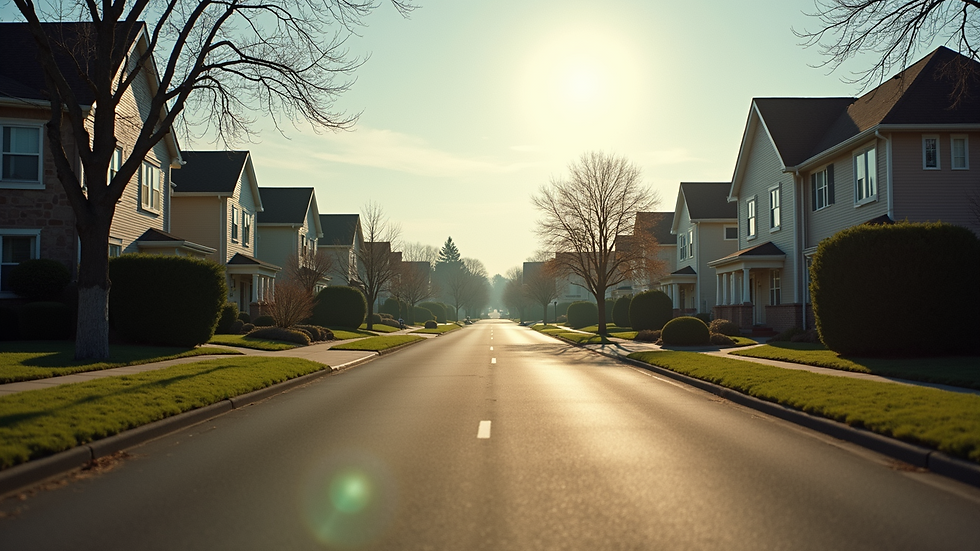A Step-by-Step Guide to Building Your Custom Home
- Brooke Justice

- Jun 25
- 4 min read
Building a custom home is a dream for many. It represents a chance to create the perfect space tailored to your needs, style, and preferences. However, the process can feel overwhelming because of the number of decisions that require careful consideration. In this guide, we will break down the steps needed to turn your dream into a reality, ensuring a smooth journey through the custom home building process.
Understanding Custom Home Building
Before diving into the specifics, it’s essential to understand what a custom home entails. A custom home is designed and built according to the preferences of the homeowner. This could include the layout, materials used, and even the finishes.
Unlike production homes, where options are limited and designs are predetermined, custom homes allow for personalization at every stage. This approach requires choosing your builder carefully. Research local builders to find one with experience and good reviews in custom home building. For more insights, check out custom home building.
Budgeting: The First Step in Your Custom Home Journey
Your budget is the foundation of your custom home project. Establish how much you can invest before you start making decisions. This will guide various aspects such as the size of your home, location, and the materials you can use.
It’s essential to create a detailed budget plan, including:
Land costs
Construction costs
Permits and fees
Landscaping
Interior décor
For example, if you allocate 30% of your budget to construction but neglect to account for additional costs such as landscaping or interior design, you may find yourself in financial trouble during the process. Taking time upfront to analyze these costs will prevent issues later.

Selecting Your Location
Once you have a clear budget, it’s time to choose a location. The location of your custom home can influence its value and your lifestyle. Consider factors like:
Proximity to schools, workplaces, and hospitals
Neighborhood safety and amenities
Future developments in the area
Choosing the right location also impacts your home design. Certain areas may have building regulations that dictate the size or style of homes. Research local zoning regulations or even consult a real estate agent to ensure your selected site is suitable for your planned design.

Designing Your Dream Home
Once you have a location, the fun part begins—designing your home. Work with an architect or designer to bring your vision to life. Consider these elements during the design process:
Layout and Flow: Think about how each room connects and delivers accessibility. An open floor plan may enhance the sense of space in smaller homes.
Energy Efficiency: Incorporate energy-efficient appliances, windows, and insulation in the design. This can save you money on utility bills long-term.
Future Needs: Plan for changes in your life. If you anticipate more family members or plan to retire soon, consider homes with versatile spaces.
An effective way to visualize your ideas is by creating a mood board with images, colors, and materials that inspire you. This can help your architect understand your style better.
Choosing the Right Builder
Choosing the right builder is crucial for your custom home journey. Look for a contractor who specializes in custom homes. Ask about their previous projects, experience, and warranties offered. Don’t hesitate to request references from past clients.
Here are a few questions to ask potential builders:
What is your experience with custom homes?
How do you handle changes during construction?
What methods do you use for quality assurance?
Trust your instincts; communication with your builder is vital, and you should feel confident that your visions will be executed.

Managing the Construction Process
Once your plans are finalized and the builder selected, construction can begin. Staying involved during this phase is important. Regular site visits help ensure work aligns with your vision. This can clarify any misunderstandings or issues promptly.
Communication with your builder should remain open. Schedule weekly check-ins to discuss the progress and any adjustments.
It's also vital to keep an eye on the budget during this phase. Unforeseen expenses may arise, but clear communication can mitigate surprises.
Moving In and Making It Home
Finally, after all the planning, budgeting, and building, the day comes when you get to move into your custom home. Celebrate this milestone! However, don't forget the final steps, including:
Walkthrough with the Builder: Inspect your home thoroughly. Create a checklist to address any open items.
Interior Design: Now is the time to furnish your space. Think about how different areas will function and look. You may want to hire an interior designer to help with this process.
Landscaping: A well-planned outdoor space enhances curb appeal. Choose plants that suit the climate and your ability to maintain them.
Building a custom home is an exciting journey filled with opportunities for creativity and personal expression. By following these steps and staying organized, you can enjoy the process of creating a space that is uniquely yours.
Embracing Your New Lifestyle
As you settle into your new custom home, take time to enjoy it. Each corner is a reflection of your choices, preferences, and dreams. Consider hosting friends and family to celebrate this new chapter in your life. They’ll appreciate seeing the thought and effort that went into creating such a beautiful space.
Staying connected with your builder and neighbors is also essential. Both can offer support as you navigate your new environment, helping you feel at home.
In summary, stepping into your custom home is a culmination of careful planning, thoughtful design, and dedicated construction. Embrace this new beginning and enjoy the journey.




Comments